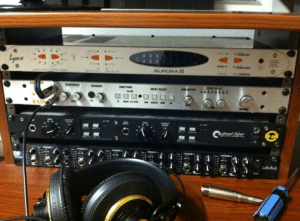What Is Audio Summing?

As you’ve been learning about mixing and mastering, there’s a good chance you’ve come across the term “summing.” We’d like to give a short overview of what summing is and how it affects your mix.
When you’re mixing multiple tracks, everything will eventually be mixed down into a two-channel stereo main mix that it can be exported. That process of combining multiple tracks into a main mix is called summing.
Different Approaches to Summing
Most likely you’re doing your summing already in your digital audio workstation (DAW) like Pro Tools or Logic. All of your tracks are eventually running to your main two channel output. In this scenario, your software is digitally summing the tracks together.
While this is completely normal and probably the most common way to sum tracks together, there are some producers who believe that digital summing does a poor job of actually blending the tracks together.
The alternative to digital summing is analog summing. If you’re working in your DAW, you would need a piece of analog hardware, like the Dangerous D-Box. You would connect your interface’s analog outputs to the analog summing box and then return two summed channels back into your interface from the analog box.
Analog vs. Digital: Which Is Better?
The difference in analog summing and digital summing is like the normal debate. Analog summing is said to make a warmer, well-rounded sound. Digital summing has been described by some as harsh and cold. However, it’s important to note that there are great records being produced both ways right now.
If you can afford it, looking into an analog summing box might add some warmth to your mix, but there’s still a great sound to be found in digital summing. What’s important is to take the time to get your mix right, and that often doing a lot of trial and error.
One of the best ways to get a good summing of your tracks to a stereo mix is to listen to mixes that you like and compare and contrast them to your own. By studying great sounding mixes–how they were summed and mastered–you’ll hone your ear and become better at producing a great stereo mix.




